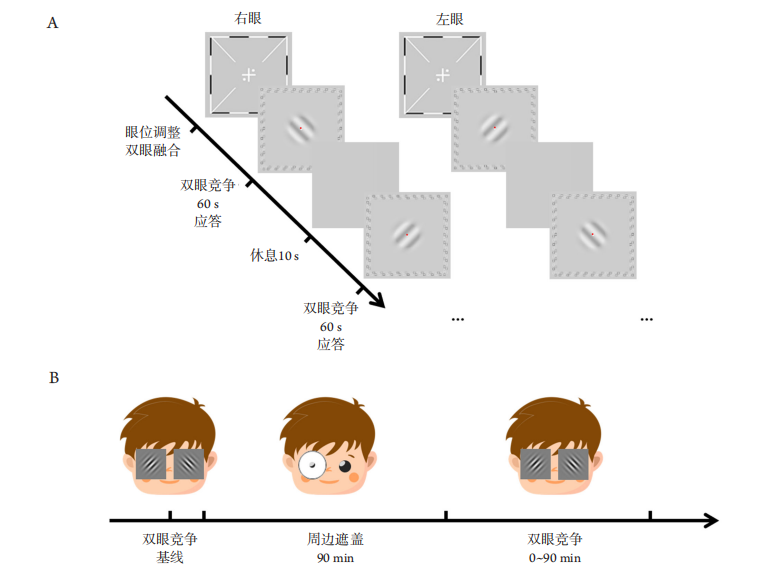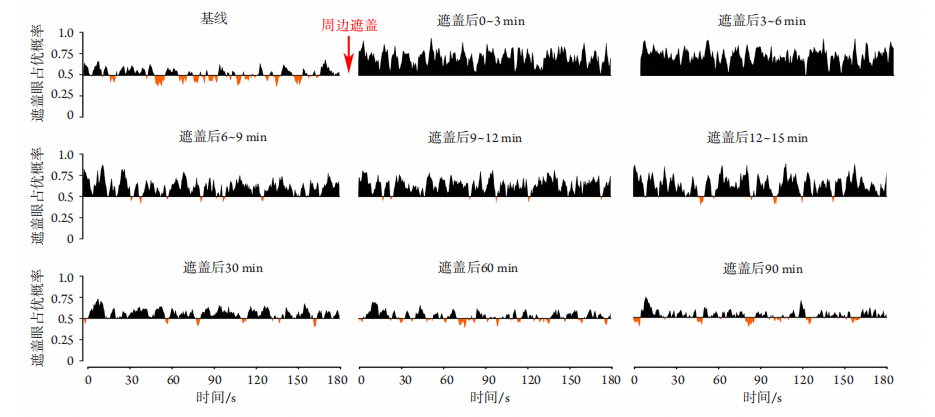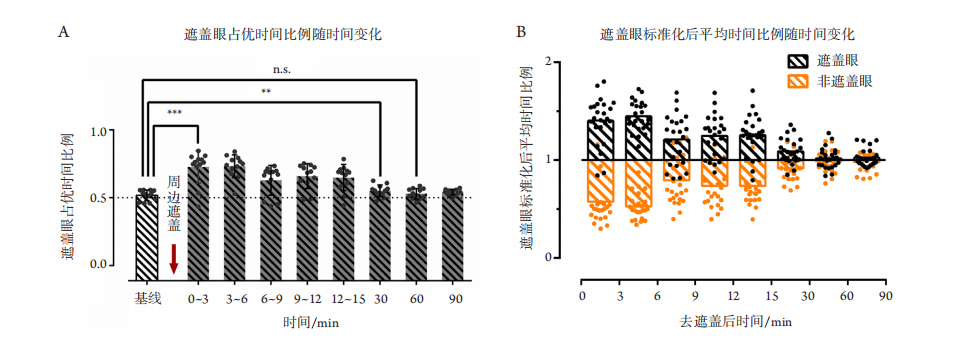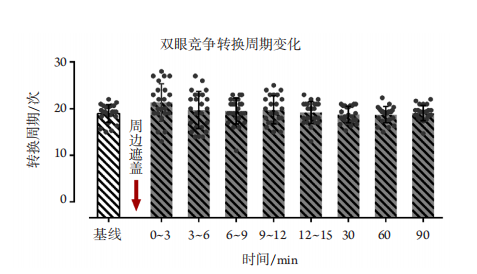1、Holmes JM, Clarke MP. Amblyopia[ J]. Lancet, 2006, 367(9519):1343-1351.Holmes JM, Clarke MP. Amblyopia[ J]. Lancet, 2006, 367(9519):1343-1351.
2、Holmes JM, Repka MX , Kraker RT, et al. The treatment of amblyopia[ J]. Strabismus, 2006, 14(1): 37-42.Holmes JM, Repka MX , Kraker RT, et al. The treatment of amblyopia[ J]. Strabismus, 2006, 14(1): 37-42.
3、Holmes JM, Kraker RT, Beck RW, et al. A randomized trial of prescribed patching regimens for treatment of severe amblyopia in children[ J]. Ophthalmology, 2003, 110(11): 2075-2087.Holmes JM, Kraker RT, Beck RW, et al. A randomized trial of prescribed patching regimens for treatment of severe amblyopia in children[ J]. Ophthalmology, 2003, 110(11): 2075-2087.
4、Wallace DK, Lazar EL, Holmes JM, et al. A randomized trial of increasing patching for amblyopia[ J]. Ophthalmology, 2013, 120(11):2270-2277.Wallace DK, Lazar EL, Holmes JM, et al. A randomized trial of increasing patching for amblyopia[ J]. Ophthalmology, 2013, 120(11):2270-2277.
5、Wang S, Wen W, Zhu WQ, et al. Effect of combined atropine and patching vs patching alone for treatment of severe amblyopia in children aged 3 to 12 years a randomized clinical trial[ J]. JAMA Ophthalmol,2021, 139(9): 990-996.Wang S, Wen W, Zhu WQ, et al. Effect of combined atropine and patching vs patching alone for treatment of severe amblyopia in children aged 3 to 12 years a randomized clinical trial[ J]. JAMA Ophthalmol,2021, 139(9): 990-996.
6、Li TJ, Qureshi R , Taylor K . Conventional occlusion versus pharmacologic penalization for amblyopia[ J]. Cochrane Database Syst Rev, 2019, 8(8): CD006460.Li TJ, Qureshi R , Taylor K . Conventional occlusion versus pharmacologic penalization for amblyopia[ J]. Cochrane Database Syst Rev, 2019, 8(8): CD006460.
7、Holmes JM, Levi DM. Treatment of amblyopia as a function of age[ J]. Vis Neurosci, 2018, 35: E015.Holmes JM, Levi DM. Treatment of amblyopia as a function of age[ J]. Vis Neurosci, 2018, 35: E015.
8、Zhou JW, Baker DH, Simard M, et al. Short-term monocular patching boosts the patched eye's response in visual cortex[ J]. Restor Neurol Neurosci, 2015, 33(3): 381-387.Zhou JW, Baker DH, Simard M, et al. Short-term monocular patching boosts the patched eye's response in visual cortex[ J]. Restor Neurol Neurosci, 2015, 33(3): 381-387.
9、Zhou JW, He ZF, Wu YD, et al. Inverse occlusion: a binocularly motivated treatment for amblyopia[ J]. Neural Plast, 2019, 2019:
5157628.Zhou JW, He ZF, Wu YD, et al. Inverse occlusion: a binocularly motivated treatment for amblyopia[ J]. Neural Plast, 2019, 2019:
5157628.
10、Lunghi C, Burr DC, Morrone C. Brief periods of monocular deprivation disrupt ocular balance in human adult visual cortex[ J]. Curr Biol, 2011,21(14): R538-R539.Lunghi C, Burr DC, Morrone C. Brief periods of monocular deprivation disrupt ocular balance in human adult visual cortex[ J]. Curr Biol, 2011,21(14): R538-R539.
11、Zurevinsky J. Eccentric fixation and inverse occlusion: renewing our interest?[ J]. J Binocul Vis Ocul Motil, 2019, 69(4): 136-140.Zurevinsky J. Eccentric fixation and inverse occlusion: renewing our interest?[ J]. J Binocul Vis Ocul Motil, 2019, 69(4): 136-140.
12、Smith EL, Ramamirtham R, Qiao-Grider Y, et al. Effects of foveal ablation on emmetropization and form-deprivation myopia[ J]. Invest Ophthalmol Vis Sci, 2007, 48(9): 3914-3922.Smith EL, Ramamirtham R, Qiao-Grider Y, et al. Effects of foveal ablation on emmetropization and form-deprivation myopia[ J]. Invest Ophthalmol Vis Sci, 2007, 48(9): 3914-3922.
13、Liu ZT, Chen ZD, Gao L, et al. A new dichoptic training strategy leads to better cooperation between the two eyes in amblyopia[ J]. Front Neurosci, 2020, 14: 593119.Liu ZT, Chen ZD, Gao L, et al. A new dichoptic training strategy leads to better cooperation between the two eyes in amblyopia[ J]. Front Neurosci, 2020, 14: 593119.
14、Rice ML, Leske DA, Smestad CE, et al. Results of ocular dominance testing depend on assessment method[ J]. J AAPOS, 2008, 12(4):365-369.Rice ML, Leske DA, Smestad CE, et al. Results of ocular dominance testing depend on assessment method[ J]. J AAPOS, 2008, 12(4):365-369.
15、Zhao W, Jia WL, Chen G, et al. A complete investigation of monocular and binocular functions in clinically treated amblyopia[ J]. Sci Rep,2017, 7(1): 10682.Zhao W, Jia WL, Chen G, et al. A complete investigation of monocular and binocular functions in clinically treated amblyopia[ J]. Sci Rep,2017, 7(1): 10682.
16、Knapen T, Brascamp J, Adams WJ, et al. The spatial scale of perceptual memory in ambiguous figure perception[ J]. J Vis, 2009, 9(13): 1-12.Knapen T, Brascamp J, Adams WJ, et al. The spatial scale of perceptual memory in ambiguous figure perception[ J]. J Vis, 2009, 9(13): 1-12.
17、 Kiorpes L, Daw N. Cortical correlates of amblyopia[ J]. Vis Neurosci,2018, 35: E016. Kiorpes L, Daw N. Cortical correlates of amblyopia[ J]. Vis Neurosci,2018, 35: E016.
18、Wiesel TN, Hubel DH. Comparison of the effects of unilateral and bilateral eye closure on cortical unit responses in kittens[ J]. J Neurophysiol, 1965, 28(6): 1029-1040.Wiesel TN, Hubel DH. Comparison of the effects of unilateral and bilateral eye closure on cortical unit responses in kittens[ J]. J Neurophysiol, 1965, 28(6): 1029-1040.
19、 Birch EE. Amblyopia and binocular vision[ J]. Prog Retin Eye Res,2013, 33: 67-84. Birch EE. Amblyopia and binocular vision[ J]. Prog Retin Eye Res,2013, 33: 67-84.
20、Meier K , Tarczy-Hornoch K . Recent treatment advances in amblyopia[ J]. Annu Rev Vis Sci, 2022, Epub ahead of print. doi:
10.1146/annurev-vision-100720-022550.Meier K , Tarczy-Hornoch K . Recent treatment advances in amblyopia[ J]. Annu Rev Vis Sci, 2022, Epub ahead of print. doi:
10.1146/annurev-vision-100720-022550.
21、Birch EE, Stager DR . Long-term motor and sensory outcomes after early surgery for infantile esotropia[ J]. J AAPOS, 2006,10(5): 409-413.Birch EE, Stager DR . Long-term motor and sensory outcomes after early surgery for infantile esotropia[ J]. J AAPOS, 2006,10(5): 409-413.
22、Stewart CE, Moseley MJ, Stephens DA, et al. Treatment dose-response in amblyopia therapy: the Monitored Occlusion Treatment of Amblyopia Study (MOTAS)[ J]. Invest Ophthalmol Vis Sci, 2004,45(9): 3048-3054.Stewart CE, Moseley MJ, Stephens DA, et al. Treatment dose-response in amblyopia therapy: the Monitored Occlusion Treatment of Amblyopia Study (MOTAS)[ J]. Invest Ophthalmol Vis Sci, 2004,45(9): 3048-3054.
23、Consorti A, Sansevero G, Torelli C, et al. Visual perceptual learning induces long-lasting recovery of visual acuity, visual depth perception abilities and binocular matching in adult amblyopic rats[ J]. Front Cell Neurosci, 2022, 16: 840708.Consorti A, Sansevero G, Torelli C, et al. Visual perceptual learning induces long-lasting recovery of visual acuity, visual depth perception abilities and binocular matching in adult amblyopic rats[ J]. Front Cell Neurosci, 2022, 16: 840708.
24、Mitchell DE, Maurer D. Critical periods in vision revisited[ J]. Annu Rev Vis Sci, 2022, Epub ahead of print. doi:10.1146/annurev-vision-090721-110411.Mitchell DE, Maurer D. Critical periods in vision revisited[ J]. Annu Rev Vis Sci, 2022, Epub ahead of print. doi:10.1146/annurev-vision-090721-110411.
25、Lunghi C, Sframeli AT, Lepri A, et al. A new counterintuitive training for adult amblyopia[ J]. Ann Clin Transl Neurol, 2019, 6(2): 274-284.Lunghi C, Sframeli AT, Lepri A, et al. A new counterintuitive training for adult amblyopia[ J]. Ann Clin Transl Neurol, 2019, 6(2): 274-284.
26、Hussain Z, Webb BS, Astle AT, et al. Perceptual learning reduces crowding in amblyopia and in the normal periphery[ J]. J Neurosci,2012, 32(2): 474-480.Hussain Z, Webb BS, Astle AT, et al. Perceptual learning reduces crowding in amblyopia and in the normal periphery[ J]. J Neurosci,2012, 32(2): 474-480.







